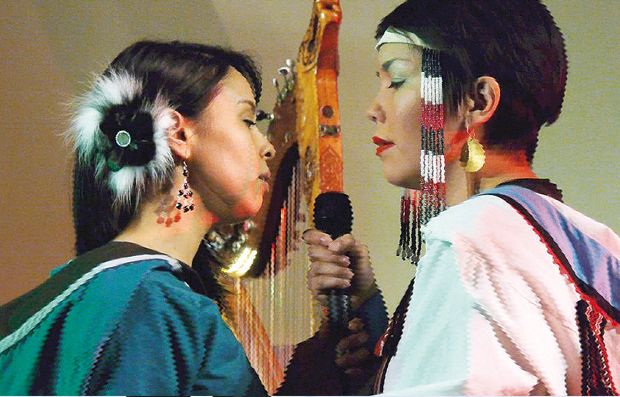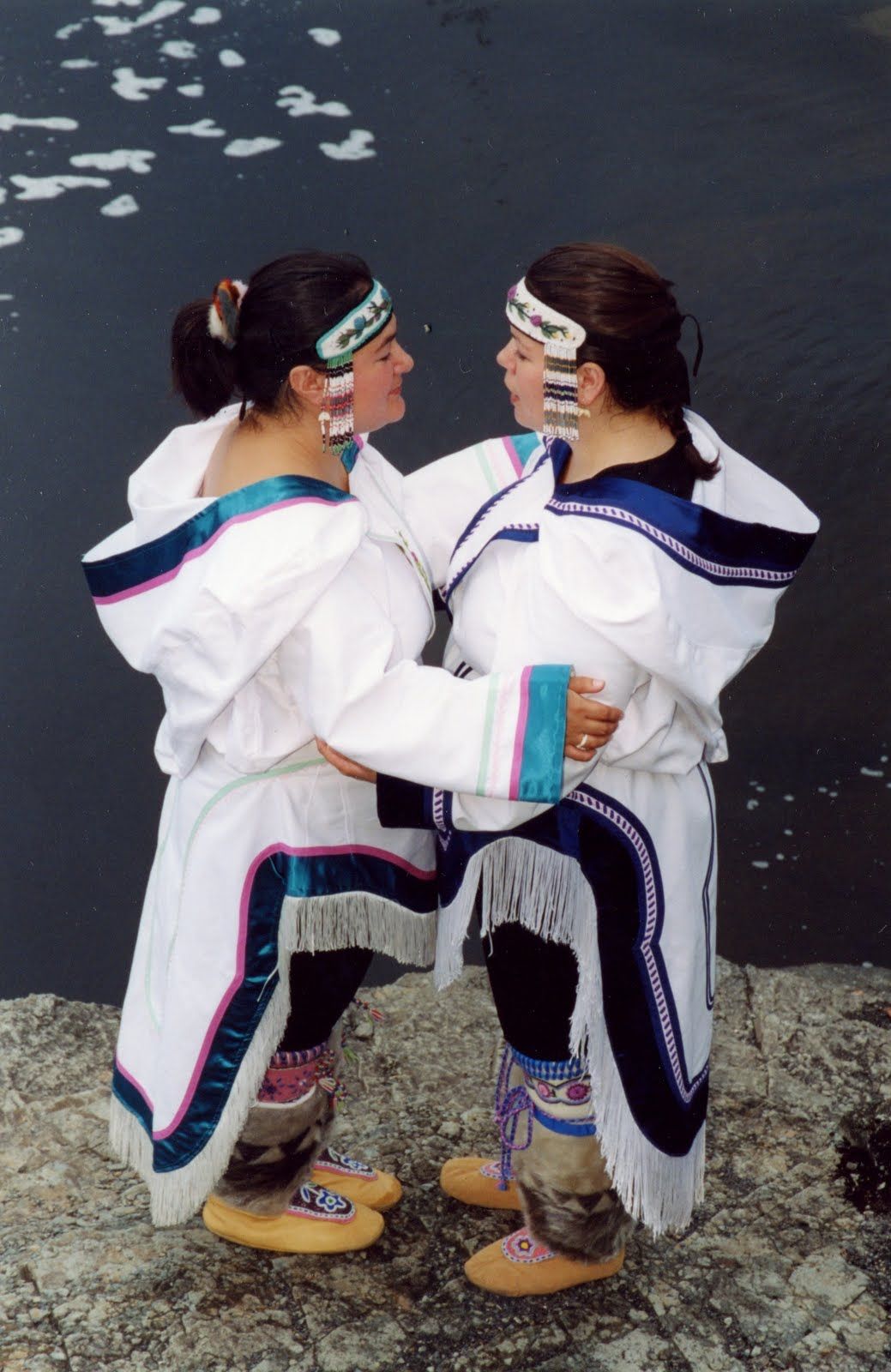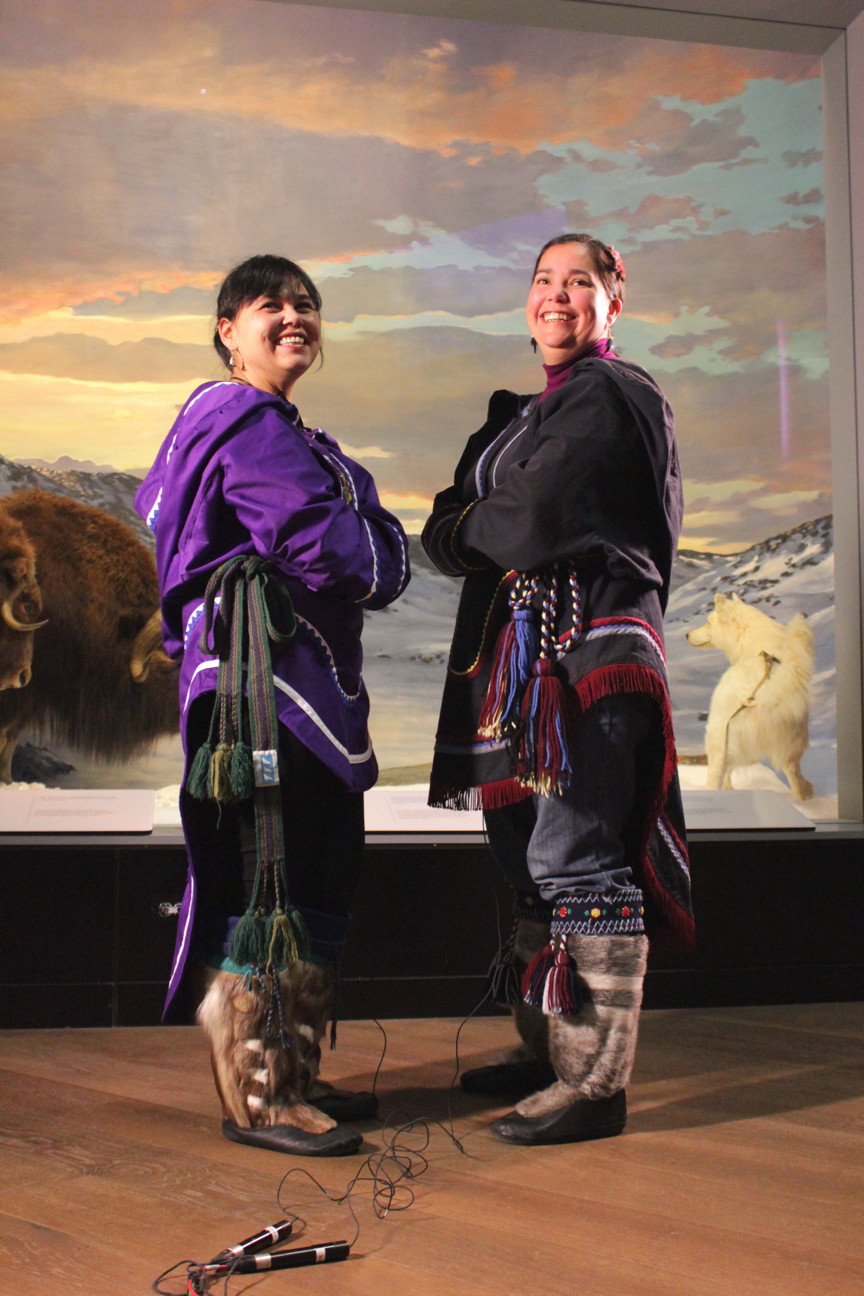



Inuit throat-singing is not singing per se. Ethnomusicologists suggest that it should be viewed as vocal games or breathing games more than anything else. Traditionally, they are considered 'games in which one makes noises', as the Inuit would say. Because of the way they use the voice, the throat, deep breathy sounds, rhythms, as well as its similarity to Mongolian and Tuvan throat-singing, it is now called throat-singing. It appears that the main reason why ethnomusicologists suggest to call them vocal games is that they do not use only the throat, they also use regular voice. Traditionally, they are games the women employed during the long winter nights to entertain the children, while the men are away hunting (sometimes for up to a month or more). As already mentioned, they are generally done by two persons, but sometimes we can find four or more performers singing together.
Inuit throat-singing is done the following way: two women face each other; they may be standing or crouching down; one is leading, while the other responds; the leader produces a short rhythmic motif, that she repeats with a short silent gap in-between, while the other is rhythmically filling in the gaps. The game is such that both singers try to show their vocal abilities in competition, by exchanging these vocal motives. The first to run out of breath or be unable to maintain the pace of the other singer will start to laugh or simply stop and will thus loose the game. It generally last between one and three minutes. The winner is the singer who beats the largest number of people.